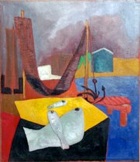The Museo dell’ Accademia di Belle Arti in the ex-Convento di San Francesco re-opened in 2012, after its restoration some 15 years after the earthquake of 1997.
This is the museum website.
History
The Accademia di Belle Arti had its origins in the the Accademia del Disegno. which was founded in 1572. Vincenzo Danti, who retired in his native Perugia in 1573, started its collection by donating copies that he had made of works by Michelangelo in Florence (see below).
Its collection of paintings formed the basis of the collection of the Galleria Nazionale, which was inaugurated in 1907.
Plaster Cast Collection
Copies of Works by Michelangelo (ca. 1570)
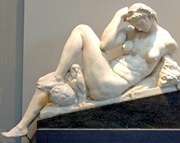
Vincenzo Danti donated these copies of four works by Michelangelo to the the Accademia del Disegno in 1573. The originals (ca. 1530) came from two Medici tombs in San Lorenzo, Florence:
-
✴the original allegories of Dawn and Dusk are on the tomb of Lorenzo de’ Medici; and
-
✴those of Night (illustrated above) and Day are on the tomb of Giuliano de’ Medici.
As noted above, these works formed the nucleus of the collection of what became the Accademia di Belle Arti.
Three Graces (1822)
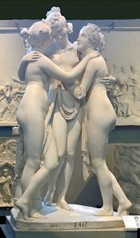
Canova sculpted the original (1813) for the Empress Josephine (the estranged wife of the Emperor Napoleon) and a close marble copy of it (1815-7) for the Duke of Bedford: these are (respectively) in the Hermitage Museum, St Petersburg and the Victoria and Albert Museum, London. The Perugia gesso is a copy of the second of these.
Il Pastorello (1823)
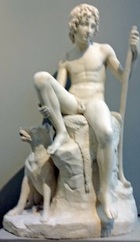
Collection of Designs
Works by Jean Baptiste Wicar (1762-1834)
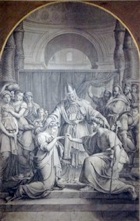
Collection of Paintings
Self-portrait (late 18th century)
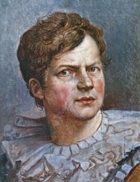
Works by Mariano Guardabasssi (1823-80)
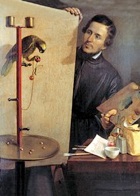
Other works by Mariano Guardabasssi in the collection include:
-
✴Socrates finds Alcibiades in a brothel (ca. 1860); and
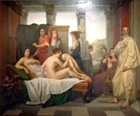
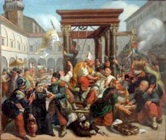
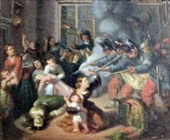
-
✴two scenes (1859) of the papal invasion of Perugia in that year (when the artist was involved in the defence of the city):
-
•papal forces at San Pietro; and
-
•papal troops in a house of Palmira Tieri in Corso Cavour (where the soldiers attacked nine helpless women).
Perugia in the 19th Century
These scenes from the tumultuous history of Perugia in the 19th century, which are attributed by the museum to Cesare Martinelli (despite the more traditional attribution to Napoleone Verga), include:
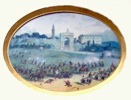
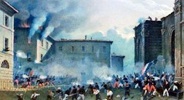
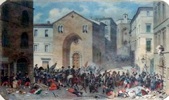
-
✴three scenes (ca. 1860) of the papal invasion of Perugia in 1859, as papal forces advanced through the Rione di Porta San Pietro (see Walk IV):
-
•outside Porta San Costanzo;
-
•outside Porta San Pietro; and
-
•at Santa Croce;
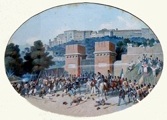
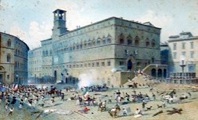
-
✴two scenes (ca. 1866) of the liberation of Perugia by Piedmontese forces in 1860:
-
•the Piedmontese at Porta Santa Margherita; and
-
•the Piedmontese in Piazza del Comune;
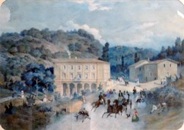
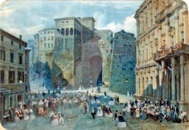
-
✴two works of ca. 1870:
-
•Perugians enjoying the spa at San Galigano ; and
-
•a celebration in Piazza Grimana (now Piazza Braccio Fortebracci - see Walk V).
Astorre Baglioni at Famagusta (1858)
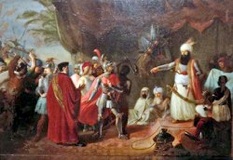
This panel by Francesco Moretti depicts this Perugian condottiere during the siege of Famagusta by the Turks in 1570. The city fell after a heroic defence, and Baglioni and his fellow officers were treacherously executed, after having been given a safe conduct.
View of Perugia (1876)
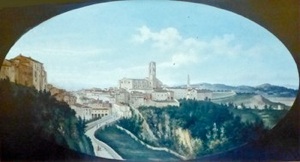
This is one of the seven views of Perugia by Giuseppe Rossi, which he gave to the Commune in 1891. (The other six are in the Galleria Nazionale.) This view has San Domenico at its centre, with San Pietro in the distance. The wall in the foreground, below San Domenico, was built by Braccio Fortebracci in ca. 1420 from Porta dei Ghezzi in what is now Viale Roma (see ) to Santa Giuliana.
Portrait of Domenico Alfani (1880)
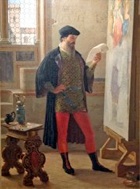
Works by Domenico Bruschi (1840-1910)
Works by Domenico Bruschi exhibited here include:
-
✴a panel (1899) of a woman bathing in a waterfall, which is signed and dated by inscription;
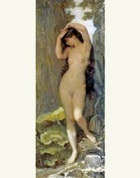
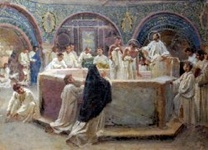
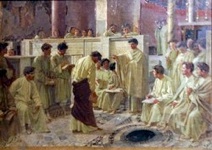
-
✴the designs in oils for two panels (1875-8) that Bruschi painted for the church of Sant’ Agostino, Valletta:
-
•the baptism of St Augustine by St Ambrose; and
-
•St Augustine’s disputation with the Donatists; and


-
✴two late works:
-
•a girl in red (ca. 1905); and
-
•girl in blue (ca. 1905).
Works by Annibale Brugnoli (1843-1915)
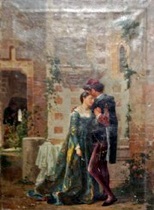
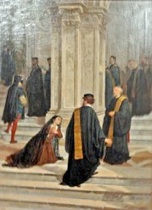
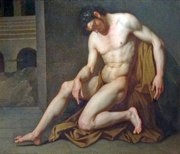
Works by Annibale Brugnoli exhibited here include:
-
✴Savonarola in prison, which was painted when Brugnoli was a student at the Academy (not illustrated);
-
✴two lovers (1872);
-
✴a portrait of the artist’s wife (Teresa Serafini, not illustrated);
-
✴the unsuccessful pleading of the fiancé of Fornaretto di Venezia to the magistrates of Venice before his execution in the 16th century; and
-
✴the figure of a man.
Model in Red (1914)
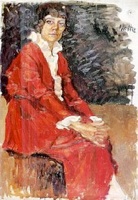
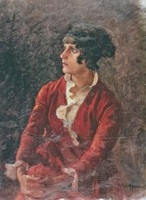
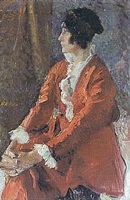
Emilio Notte Giovanni Battista Carpanetto Armando Spadini
The museum displays three signed studies in oil on canvas that were submitted for an examination in 1914. That by Armando Spadini was initially judged the winner, but the competition was subsequently abandoned amid controversy.
Works by Gerardo Dottori (1884-1977)
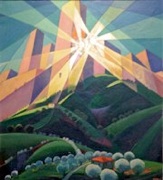
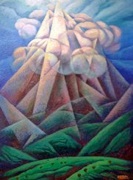
Two works by Gerardo Dottori are exhibited in the museum:
-
✴Sun on the Towers (1930), illustrated here on the left; and
-
✴Song of the Mountains (1954).
Fishing in Fano (1947)
